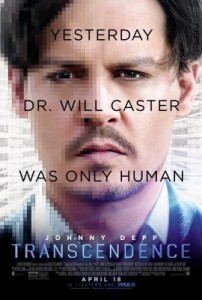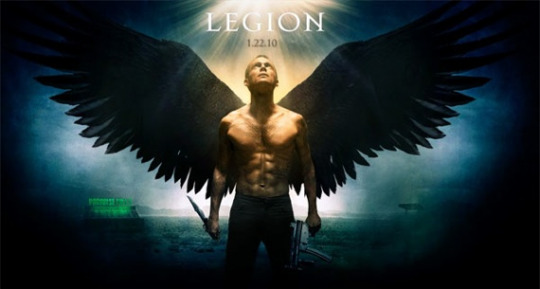Transcendence
Posted on April 17, 2014 at 6:00 pm
 Think of it as “Her 2: The Revenge of Him.” Or Samantha infected by Heartbleed.
Think of it as “Her 2: The Revenge of Him.” Or Samantha infected by Heartbleed.
Just as in last holiday season’s Her, “Transcendence” is the story of an artificial intelligence contained in a computer program that becomes or is seen as human consciousness. Instead of the warm, affectionate voice and bubbly laughter of Scarlett Johansson, we get the portentous monotone of Johnny Depp, as a scientist murdered by anti-technology activists, whose mind and memories and personality are uploaded to a mainframe before he dies. Apparently he has time to read the Oxford English Dictionary aloud, too, so his voice can be preserved.
Cinematographer Willy Pfister, best known for working with Christopher Nolan, turns to directing for a story set in the world of the highest of high tech but grounded in hubristic themes that go back to Icarus and up through “Frankenstein,” and “The Unknown Known.” Even with Nolan as producer, however, he is weak on narrative, pacing, tone, and working with his talented cast. Morgan Freeman, Clifton Collins, Jr., Kate Mara, Paul Bettany, and Rebecca Hall have never appeared so toned-down and disconnected, just plain under-used. Depp appears mechanical even when he is still human. And the film has the unmistakable flavor of a recut following disappointing early audience responses.
A promising premise gets bogged down right from the beginning when Max Waters (Bettany) introduces us to a post-apocalyptic world where traffic lights no longer work and discarded keyboards are used to prop open the doors of bodegas that are out of more items than they have to sell. The grid is down. It has been down for a long time. And no one knows when it will be back.
We go back five years earlier to meet the brainy, gorgeous, and so-in-love couple Will and Evelyn Caster (Depp and Hall). Here’s how adorbs they are; in her beloved garden (hmmm, Evelyn — is she Eve?) he is installing a copper canopy, to cut them off from cell phone signals and other technological intrusions). They are on their way to present their work to donors, where he explains that she is the one who wants to change the world. He just likes to work on cool stuff.
When he is fatally injured in an anti-technology attack led by Bree (Kate Mara) — we know she is up to no good because of the heavy eye liner — Evelyn decides she can keep him alive in some sense by uploading his consciousness to the mainframe. Max helps her, but when it works, he immediately sees that it is a problem, and Evelyn, furious, tells him to leave. Evelyn is so happy to have Will back in any form that she is happy to follow his directions. Soon, his intellectual capacity is increasing exponentially and she is following his directions to take over a remote, all-but-deserted town, install a football field-sized solar panel energy generator and a five-stories-below-ground lair a Bond villain would envy. She walks through endless corridors like Beauty in the castle of the Beast.
“It’s like my mind has been set free,” the computer-Will tells Evelyn. The combination of the human urge for learning and growth and the unlimited capacity of the computers leads to problems that are only evident when Will is too big to stop. Somehow, even his infinitely magnified intelligence and endless capacity to snoop do not make him capable of understanding women. “Your oxytocin and serotonin levels are off,” he tells her tenderly, if a bit robotically), “I’m trying to empathize.” This becomes extra-creepy (as in “Her”) when he tries to come up with a way for them to be together physically,
Will figures out a sort of 3D printer of any kind of cell, including human tissue. He is able to cure any illness, heal any wound. Without asking or even telling the patients, he tweaks them all as well, inserting himself into their brains. Those anti-technology activist/terrorists are looking pretty smart now, but perhaps not as smart as the government, who allies with them only so they will have someone to blame.
We know where this is going because we saw the beginning of the movie, just two hours earlier. Just to remind us, we get to see the exact same images all over again, but instead it reminds us we have not seen very much in between.
Parents should know that this film includes bloody violence with guns and heavy artillery and some disturbing and graphic images, some strong language, and some sexual material.
Family discussion: Was the computer consciousness Will? Did it stop being Will? What is the significance of Will’s name?
If you like this, try: “Her” and “12 Monkeys” (rated R)


